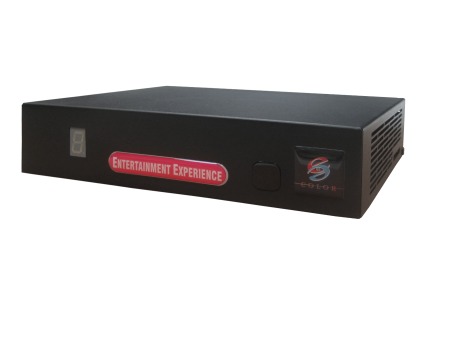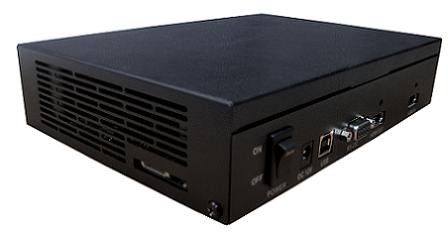While color - at least on a TV screen - can be subjective, it is generally agreed that it can almost always be improved. That's the thinking from Entertainment Experience, a digital color technology firm that has introduced the world's first and only 3D, multi-dimensional color video technology with full modeling of color space device characteristics, viewing environment, visual perception and adaptation.
The company was on hand this week at the Consumer Electronics Show to unveil the eeColor, a device the creators say can dramatically improve the contrast, brightness and color of any television or video display device without changing the artistic look of the media or memory colors such as flesh tones and clear blue skies.
"The digital color standard," says Jim Sullivan, president and co-founder of Entertainment Experience, "has not changed since the 1970s, and as a result color quality has remained the same." He stresses that the color gamut of most modern devices extends beyond these current standards. eeColor takes advantage of that increased color capability to take the home entertainment experience to a whole new level. Entertainment Experience's technology is available in the HDMI plug-and-play TruVue eeColor Processor.
"Recent focus has been on image resolution and clarity in television and video displays. The time is right for the next revolutionary advancement with color standards which have not changed for decades," said Jim Sullivan, president and co-founder, Entertainment Experience. "With eeColor, we have developed color modeling tables that drastically improve upon the entire viewing experience. Our technology is changing how the consumer electronics market will look at movies, games and videos."

The eeColor processor has 6 selectable, 3D color tables inside that transform the input RGB colors to new RGB colors that increase colorfulness, contrast and brightness while preserving known colors like flesh tones, blue skies, etc. The color improvement does not change the artistic look of the media but rather compensates for differing viewing environments with knowledge of human vision.
For each room lighting, there are two choices for the type of media; namely movies and games/broadcast television. The movies have the "warm" color look of professional cinemas included, and the games or broadcast television have slightly larger increases in colorfulness for games and graphic colors.

For More Information